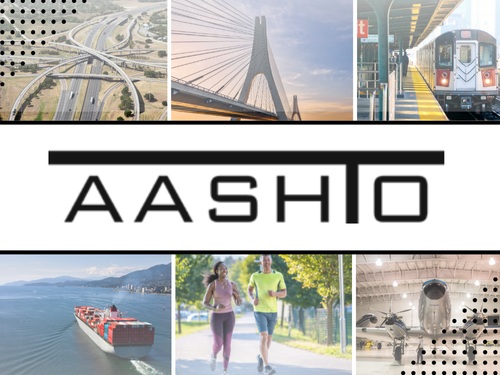The American Association of State Highway and Transportation Officials recently provided the Federal Transit Administration with feedback regarding the agency’s notice of proposed rulemaking or NPRM issued in April regarding changes to public transportation agency safety plans. FTA sough such feedback via a request for comments filed in early June.
[Above image by AASHTO]
“In regards to the NPRM, AASHTO strongly supports FTA’s decision to defer regulatory action on operators of a public transportation system that only receives federal financial assistance under 49 U.S.C. 5310, 49 U.S.C. 5311, or both 49 U.S.C. 5310 and 49 U.S.C. 5311,” the group said in a letter sent to the agency on June 21.
“AASHTO believes this exemption better accommodates critical operations of small public transportation providers and recommend it to remain in place going forward,” the organization added. “AASHTO appreciates the clarifications that are made to definitions and terms to facilitate consistency, such as modifying the definition of ‘small public transportation providers’ to align with FTA’s Transit Asset Management regulation and incorporating the definition for ‘assault on transit workers’ from the Infrastructure Investment and Jobs Act.”
However, AASHTO suggested that FTA consider the addition of extra clarifications to its NPRM:
- More clearly describe the means by which small urban operators are to develop their approach to cooperation with frontline transit employees in transit agency Safety Management Policies (Section 673.23(a)).
- Specify the data and information on infectious disease exposure which transit agencies should consider from the Centers for Disease Control and Prevention or state health authority (Section 673.25(b)(2)).
- Clarify whether the safety communication activities resulting from the requirement for transit agencies to integrate the results of cooperation with frontline transit worker representatives and joint labor-management safety committee activities are intended to be considered part of the Agency Safety Plan or separate documentation (Section 673.29(b)).
AASHTO also noted in its letter that some transit agencies have reported notable challenges with confidential and identifiable safety reporting in an effective manner, which include a lack of education regarding the importance of reporting near-miss data.
AASHTO also noted that the annual costs of safety reporting programs “appear minimal,” adding that some transit agencies have used third party assistance to develop internal processes for safety data analysis.
 Nation
Nation
Registration Open for 2026 AASHTO Washington Briefing
December 12, 2025 Nation
Nation

